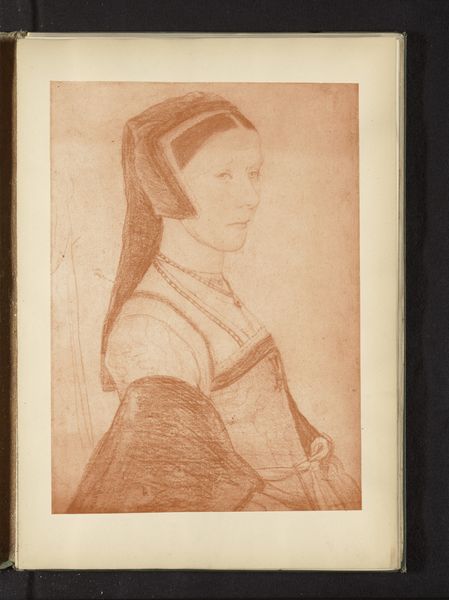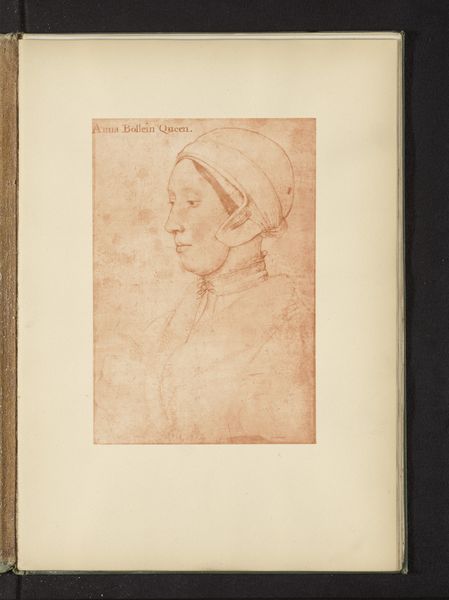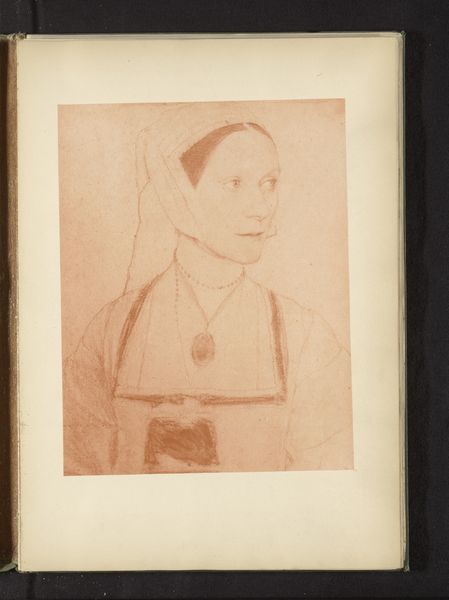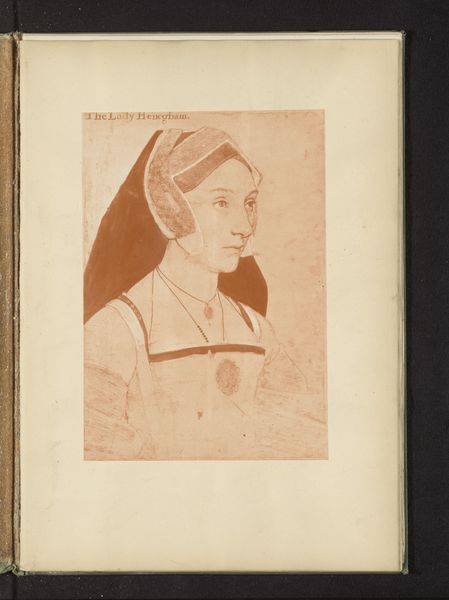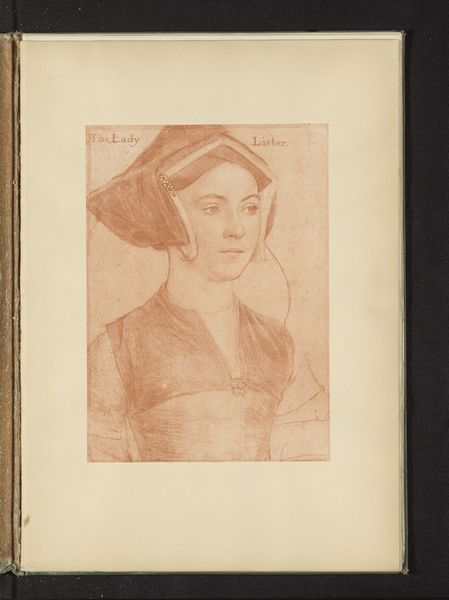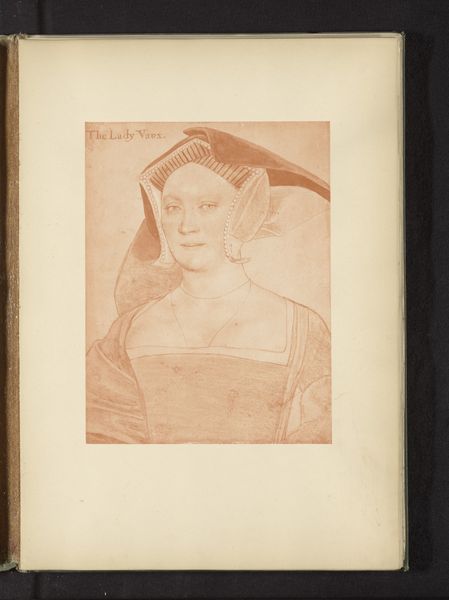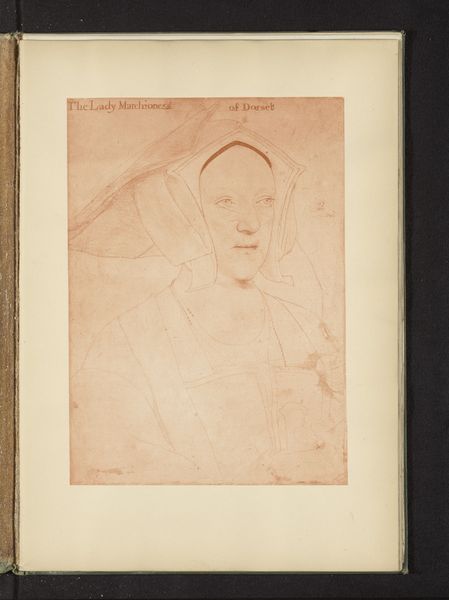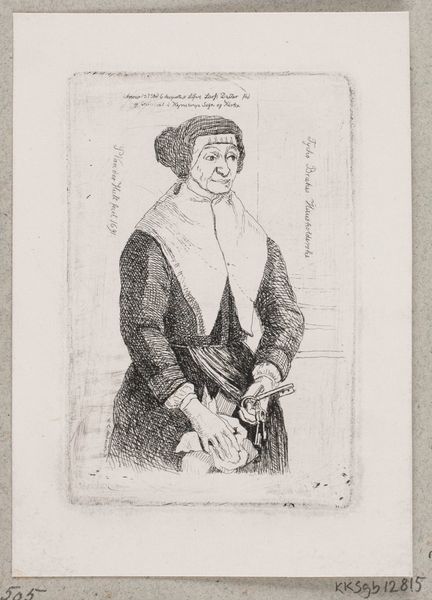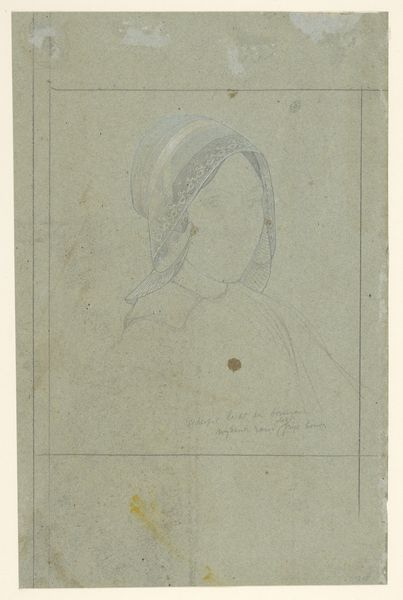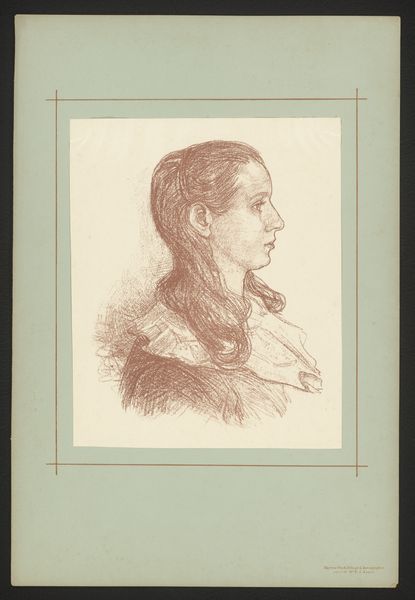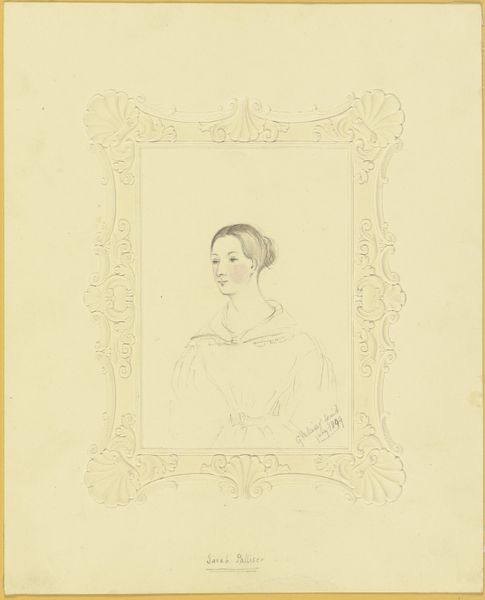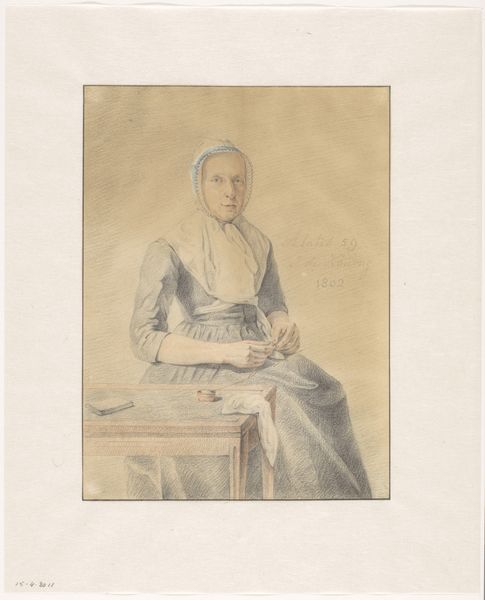
Fotoreproductie van een portret van Margaret à Barrow door Hans Holbein before 1877
0:00
0:00
anonymous
Rijksmuseum
drawing, paper, pencil
#
portrait
#
drawing
#
pencil sketch
#
white palette
#
paper
#
11_renaissance
#
sketch
#
pencil
Dimensions: height 274 mm, width 204 mm
Copyright: Rijks Museum: Open Domain
This photographic reproduction captures Hans Holbein's portrait of Margaret à Barrow, and though the date and maker are unknown, it speaks volumes about the hierarchies of art and labor. Originally a drawing, likely in chalk or red sanguine, the artwork's translation into a photograph raises interesting questions about value and authenticity. The photograph flattens the textures and subtleties of the original drawing, reducing the handcraft of Holbein to a reproducible image. This shift mirrors broader changes in society, where industrial processes began to overshadow handcrafted goods. The choice of photography—a relatively new technology at the time—highlights a tension between the unique artwork and mass production. By reproducing Holbein's portrait, the photograph democratizes access to art, making it available to a wider audience beyond the elite circles of the time. Yet, it also distances us from the intimate skill of the artist’s hand. Ultimately, understanding the processes and social context behind this image urges us to consider the amount of work involved, and how that labour relates to its value.
Comments
No comments
Be the first to comment and join the conversation on the ultimate creative platform.
